Akron to tear down rest of Rubber Bowl, Heisman Lodge
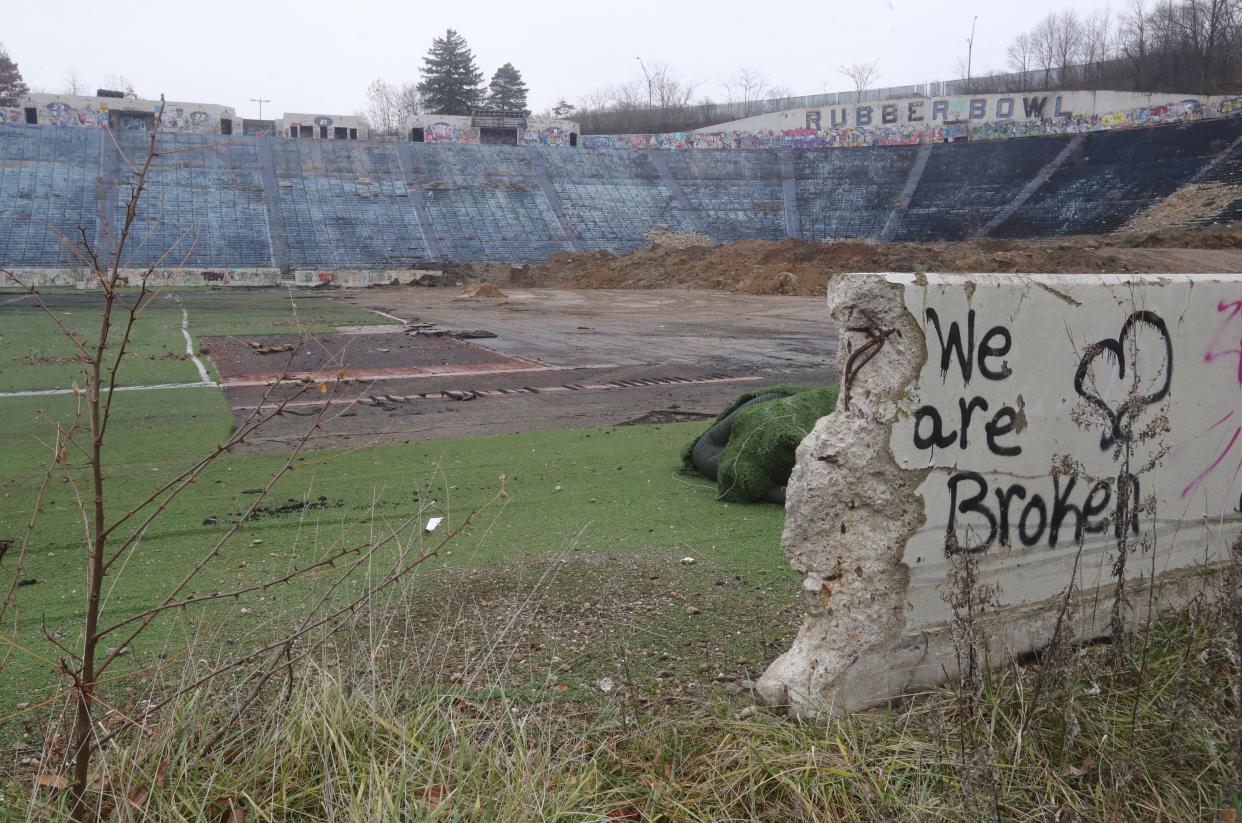
The Rubber Bowl is a shell of its former self.
The partially demolished, 35,000-seat stadium, ravaged by vandals and splattered with graffiti, looks like the ruins of some ancient amphitheater.
Soon it will be reduced to rubble, leaving nothing but memories.
More:Can it be saved? Frustrated owner doesn’t want to raze old Beacon Journal building
The Akron City Council on Monday agreed to tear down what’s left of the stadium and raze the nearby Heisman Lodge. The city authorized Public Service Director Chris Ludle to seek bids and enter into contracts to remove the historic structures, noting they are “dilapidated, prone to vandalism and trespass, and [need] to be demolished.”
“I think we’re all familiar with what’s left at the Rubber Bowl,” Ludle told the council’s Public Service Committee earlier in the day.
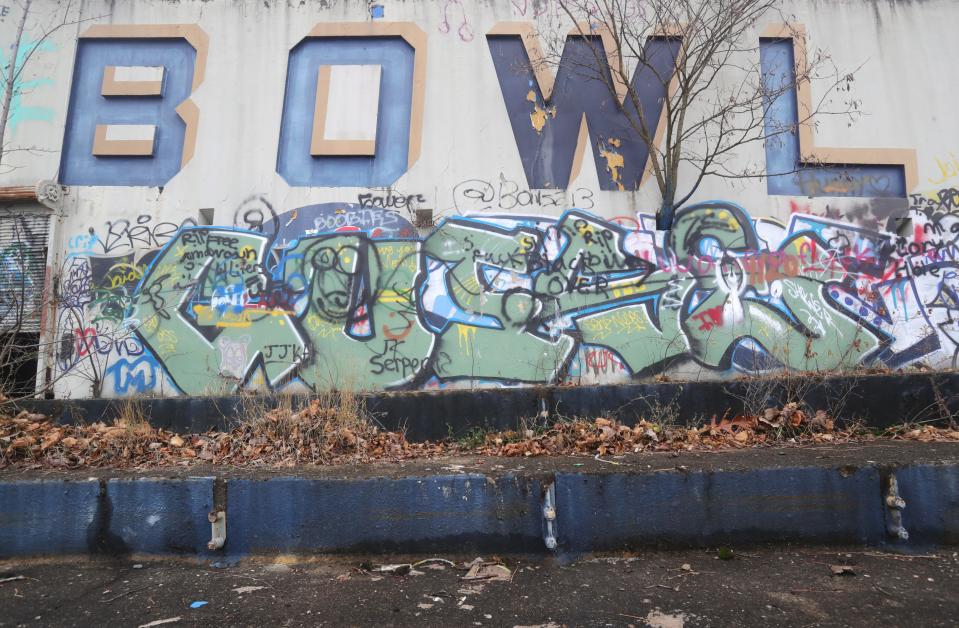
Old concession stands and unsightly structures on the south and east sides of the stadium will be razed. Work crews will fill, grade and revegetate the site, maintaining the infrastructure that holds up George Washington Boulevard, he said.
“So basically when we’re all done, and it’s all demoed, it’s just going to look like a hill,” Ludle said.
Derby Downs, home of the All-American Soap Box Derby, will no longer have a derelict neighbor to the east.
Sean Vollman, deputy mayor for integrated development, estimated the cost of the demolition at $750,000. The city has applied for a state grant that would cover 80% of the project, he said.
The money would come through the Ohio Department of Development’s Building Demolition and Site Revitalization Program and be run through the Summit County Land Bank.
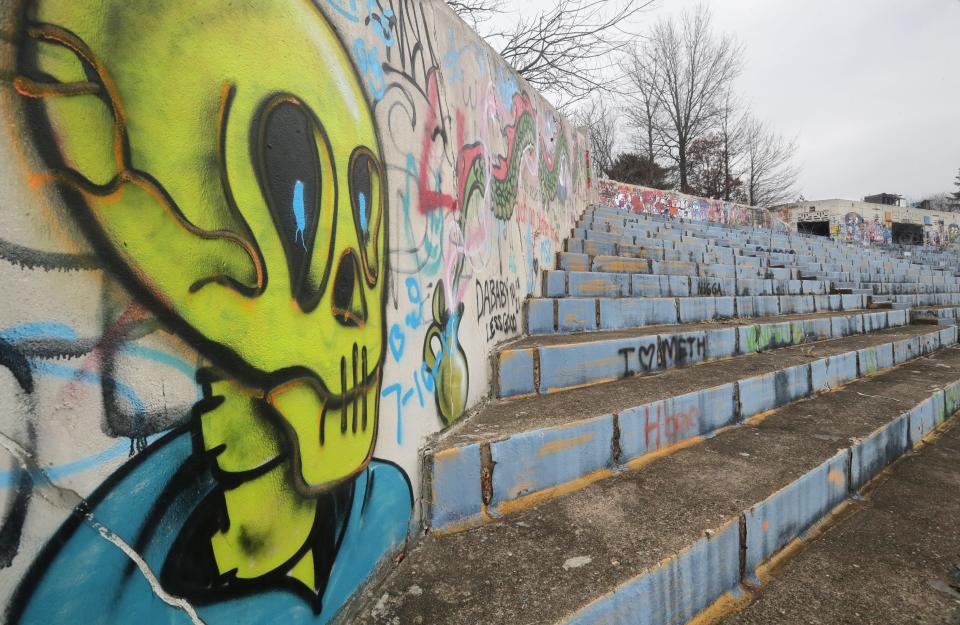
“We are cautiously optimistic that we are going to get this grant from the state,” Vollman said Tuesday. “But I think we’re at the point where, even if we don’t, we need to move forward with this in the short term as opposed to the long term.”
While city ordinance calls it “the Rubber Bowl redevelopment plan,” that’s a bit of a misnomer, he said. There are no immediate plans to develop the site.
The work will be a continuation of the demolition that began in 2018.
“We need to finish the job,” Vollman said.
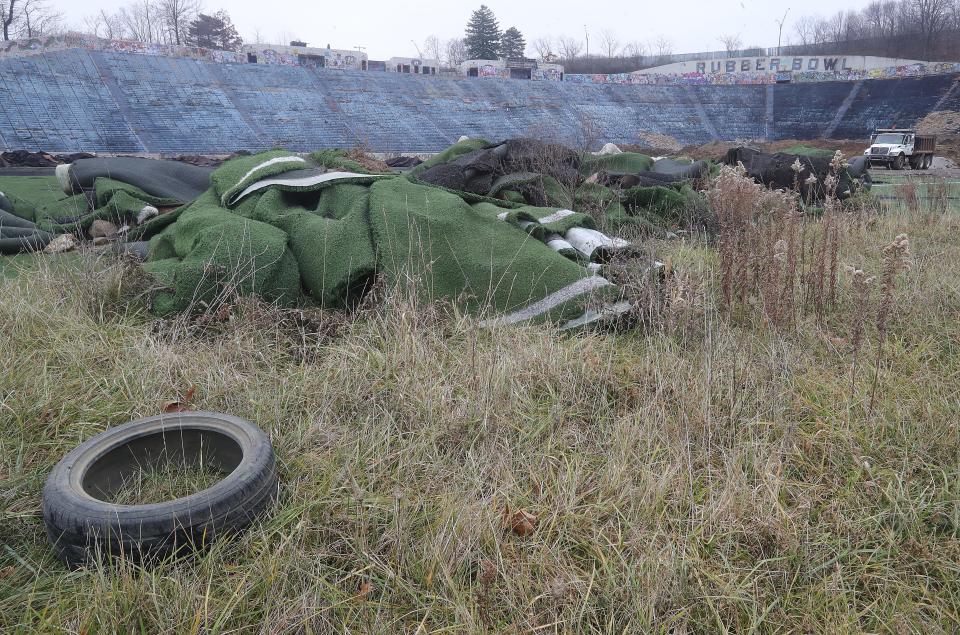
Rubber Bowl opened in 1940
It will be a merciful act for those who remember the Rubber Bowl in its prime.
B.E. “Shorty” Fulton, manager of Akron Municipal Airport, proposed building the stadium after arranging for workers to excavate the hillside for fill dirt in 1933. He thought the leftover hole would make a perfect bowl for sporting events.
In 1939, the WPA agreed to provide $246,000 in federal funds (more than $5 million today) to build a stadium if Akron contributed an initial $30,000. Despite the Great Depression, 30,000 citizens donated $1 apiece during a one-month campaign.
Designed to seat 37,000 people, the concrete behemoth would replace the University of Akron’s Buchtel Field, which held only 7,500.
WPA workers broke ground in May 1939 near Derby Downs, which the relief agency had constructed three years earlier. More than 40,000 people jammed the Rubber Bowl’s grand-opening celebration in August 1940.
“This dream that Akronites have cherished has come true,” the Beacon Journal celebrated. “It has come through in concrete and steel. It has come true in the handsomest, most beautiful and well-appointed stadium in the world.”
At the time, the suggested uses for the Rubber Bowl included football games, church services, band concerts, pageants, light operas, musicals, conventions, track meets, bicycle races, auto races, boxing tournaments, wrestling matches, softball tournaments, tennis matches, rodeos, Mardi Gras festivals, Halloween festivals, professional hockey games, winter carnivals, ice skating, archery tournaments and rifle matches.
Over 20,000 attended the stadium’s first football game Oct. 4 when UA lost 6-0 to Western Reserve University.
Old stadium full of memories
The next seven decades were a blur of events, activities and crowds.
For nearly 50 years, Akron high school football teams played for the City Series championship in the Turkey Day game on Thanksgiving. The University of Akron battled for glory 48 times in the annual Acme Zip Game. The stadium served as the setting for 19 Cleveland Browns exhibition games and one NFL regular-season game in which the homeless Dallas Texans beat the Chicago Bears on Thanksgiving 1952.
Bantam football teams that took the field included the Kenmore Gremlins, St. Vincent Shamrocks, Eastside Corsairs, South Rangers, Central Flyers, West Hornets, North Commandos, Portage Lakes Panthers and Barberton Barons.
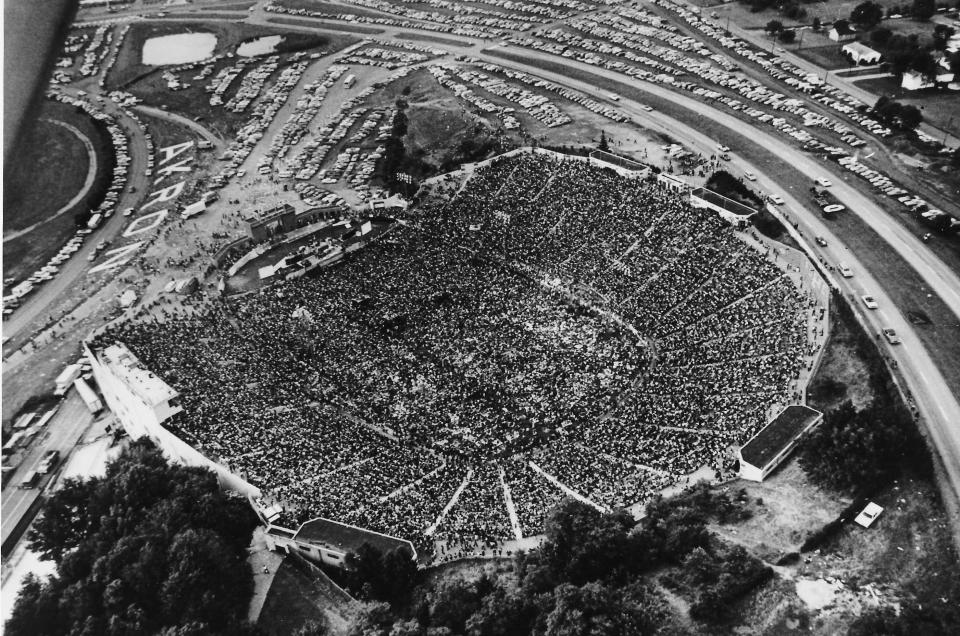
Among the music legends who performed at the Rubber Bowl were the Rolling Stones, Stevie Wonder, Jefferson Airplane, Black Sabbath, Alice Cooper, Rod Stewart, the Osmonds, Simon & Garfunkel, Bob Dylan, Tom Petty, Grateful Dead, Van Halen, Bon Jovi, Metallica, Ringo Starr and Aretha Franklin.
Sugar Ray Robinson boxed. Billy Graham prayed. Liberace played. Hank Williams crooned. Lassie barked. Karl Wallenda walked a tightrope.
Midget auto racing, Ringling Bros., Scout-O-Rama, Grand Ole Opry, Harlem Globetrotters, Youth in Democracy, Akron Bears, Summit County Fair, Kiwanis Horse Show, Championship Wild West Rodeo, Special Olympics, Summer Sports Spectacular, Water Follies, U.S. Army War Show, Akron Vulcans, Jimmy Lynch’s Death Dodgers, U.S. Hot Rod Association Truck and Tractor Pull Championships, Monsters of Rock, Ozzfest.
It all happened at the Rubber Bowl.
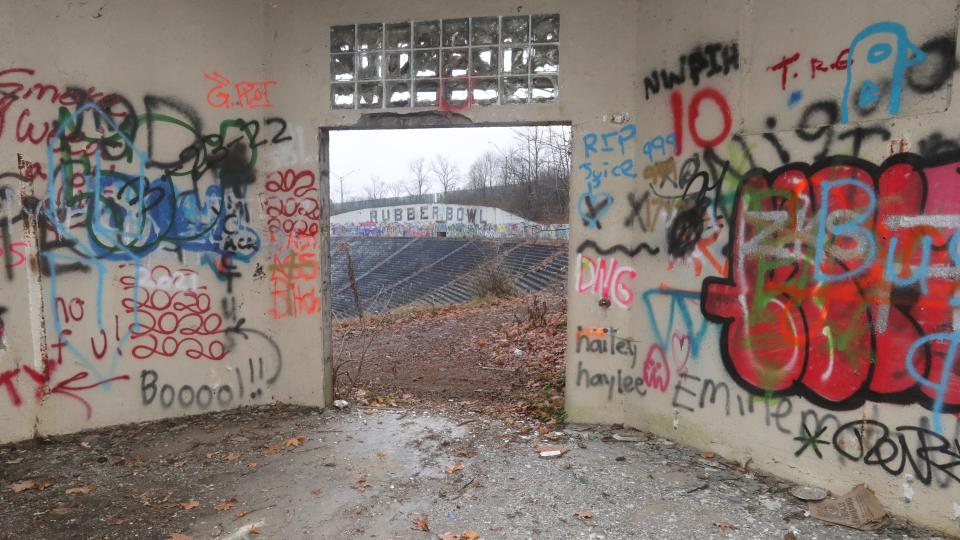
Last football game was a thriller
The city sold the stadium to the University of Akron for $1 in 1971. Amid crumbling conditions and the prospects of playing closer to campus, the Zips abandoned the Rubber Bowl for InfoCision Stadium.
UA’s final football game at the old venue was a 43-40, four-overtime loss to Buffalo before 18,516 fans Nov. 13, 2008. ESPN carried the game live on national television.
A Canton company paid $38,000 for the property in 2012, but plans for improvements never materialized. The city regained ownership.
Local history:Shopping was a pleasure at O’Neil’s store at Stow-Kent
The stadium crumbled for more than a decade. Trees grew in the stands and vandals tagged the walls with graffiti.
The city demolished the north and west sides in 2018, including the front entrance, press box and main scoreboard. The south and east sections were left behind if only to brace the hill below George Washington Boulevard.
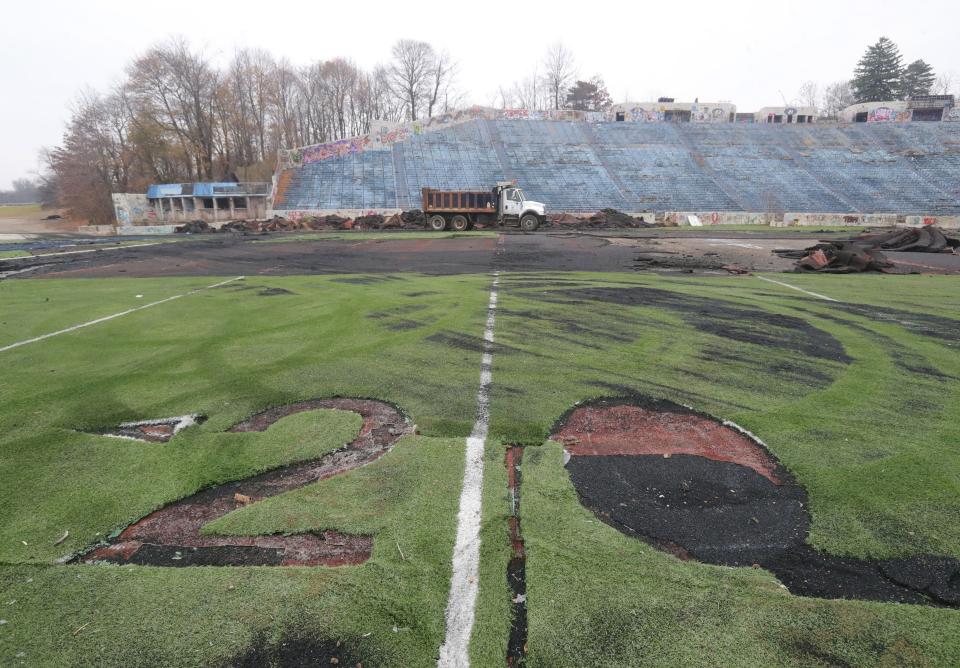
Part of the eastern stands will remain to support the infrastructure, but they will be buried.
“We’ll fill it in and we’ll topsoil and seed it,” Ludle told the council committee Monday. “So at the end of the day, it will just be a vegetated hill.”
The city envisions planting wildflowers instead of grass because “we don’t need another however many acres to mow right now,” Ludle said.
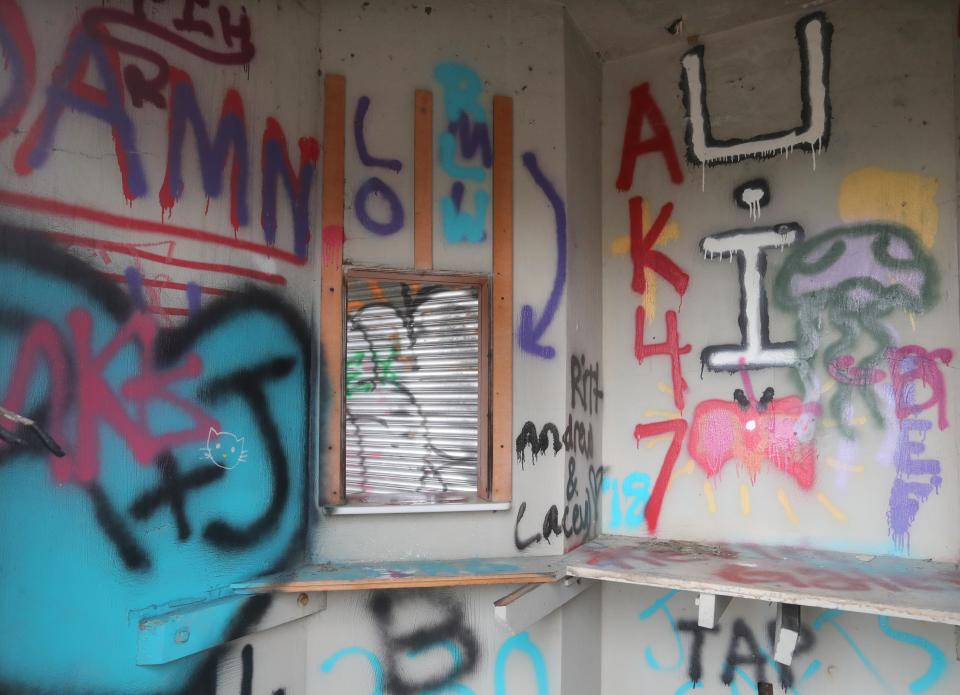
Heisman Lodge also will be razed
The Heisman Lodge also is headed for the wrecker’s ball. Hidden among the trees, the rustic building has a lower profile than its gigantic neighbor.
“If you’ve never been up to it, you won’t be able to see it,” Ludle explained.
Completed in late 1934, the former shelter house was the heart of a winter sports complex envisioned by airport manager Shorty Fulton.
The stone structure had four fireplaces to warm skaters, skiers, sledders and tobogganers. Neighbors jokingly called it “Shorty’s Mansion.”
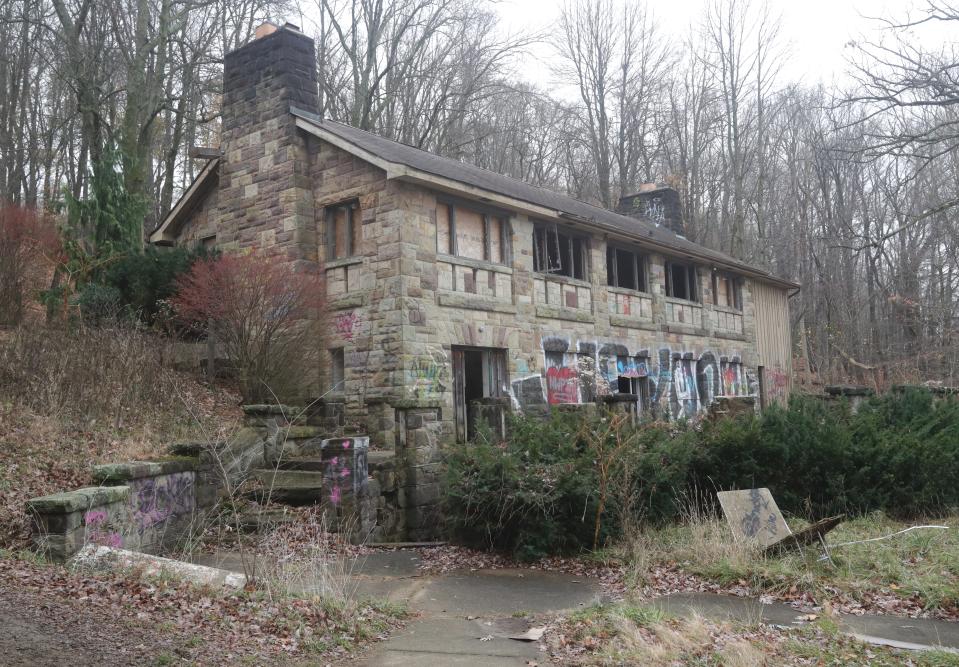
Toboggan chutes, a bobsled run and three ski runs — a beginner’s hill, a 10-meter jump and a 20-meter jump — were constructed in view of the airport.
“We’ll make this the greatest municipally operated winter sports center in this part of the United States,” Fulton announced.
It didn’t work out that way. The winter resort closed by the early 1940s and nature reclaimed the hill.
More:B.F. Goodrich smokestacks to be torn down in Akron
Over the decades, the shelter fell prey to vandals, who tore out windows and smashed timbers. In 1988, the city turned over the property to the University of Akron.
Following a $150,000 remodeling, UA trustees renamed it the John W. Heisman Lodge in honor of the legendary football player who coached at Akron’s Buchtel College in the 1890s. The 5,150-square-foot building served as a pregame reception center for the Rubber Bowl and a museum and hall of fame for the Soap Box Derby.
When UA vacated the Rubber Bowl, it agreed to turn the lodge back over to the city. The building has stood vacant since 2013.
Vandals descended again, and this time, there will be no remodeling.
“It’s well beyond repair,” Ludle said.
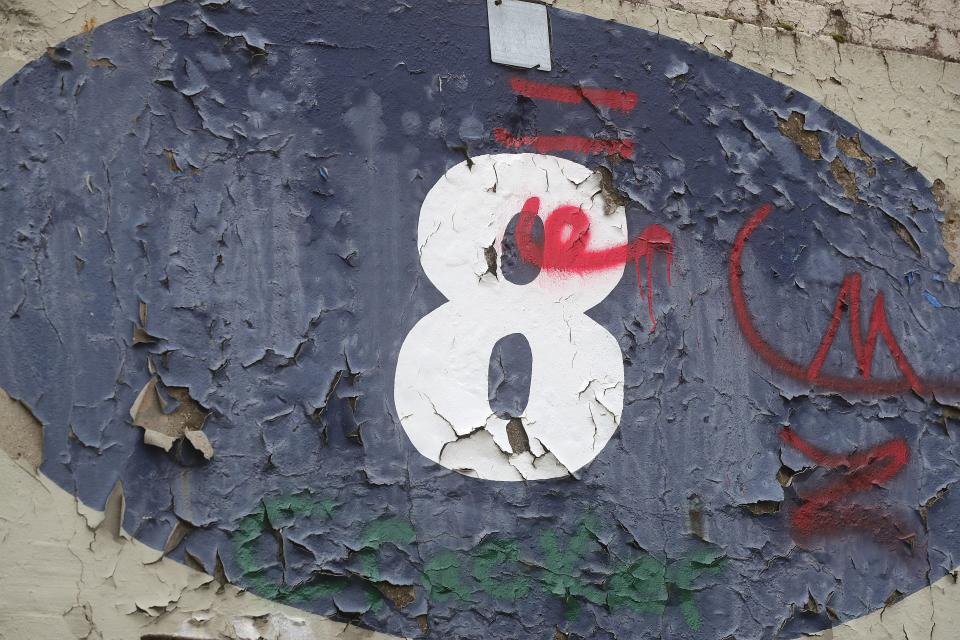
Asbestos has already been removed from the building, so the only thing left to do is tear it down and haul away the stones.
“And then we will look at what will be the long-term redevelopment of that whole area,” Ludle said.
The Rubber Bowl and Heisman Lodge, two relics of another era, will be history.
Mark J. Price can be reached at mprice@thebeaconjournal.com.
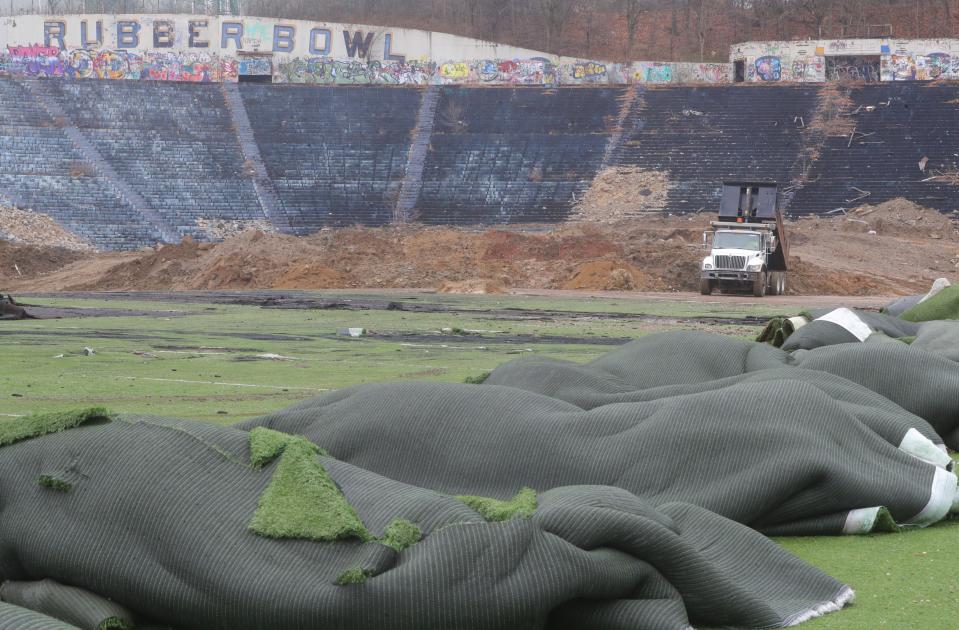
1972The year that rocked the Rubber Bowl
Local history:Five Points Shopping Center really clicked in Akron
This article originally appeared on Akron Beacon Journal: Rubber Bowl, Heisman Lodge to be demolished in Akron

